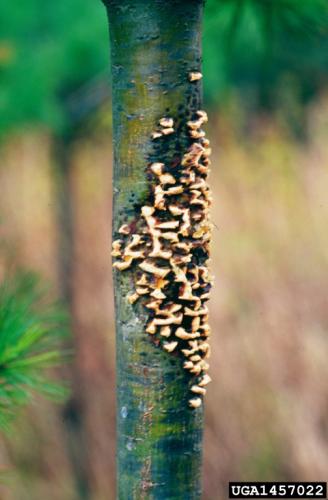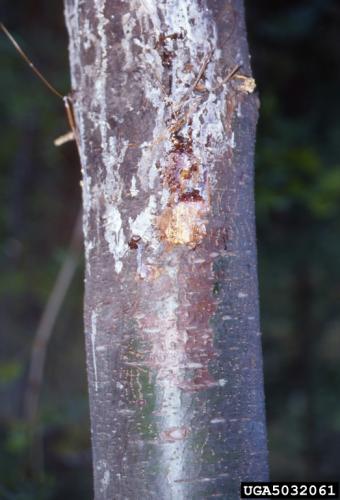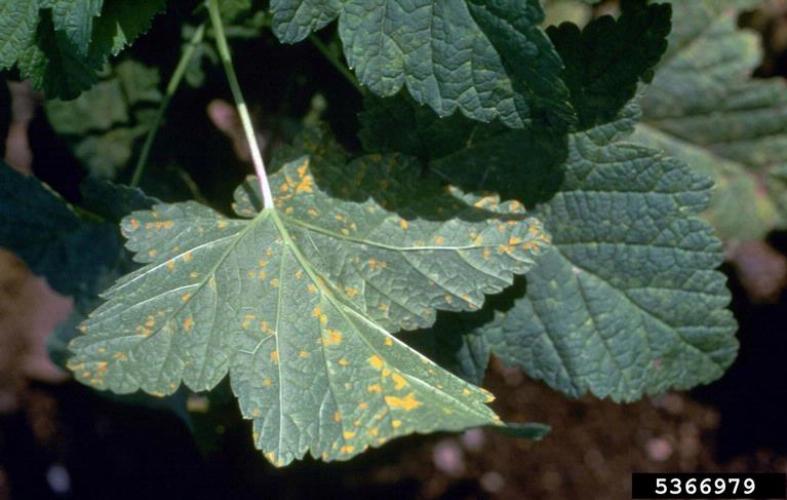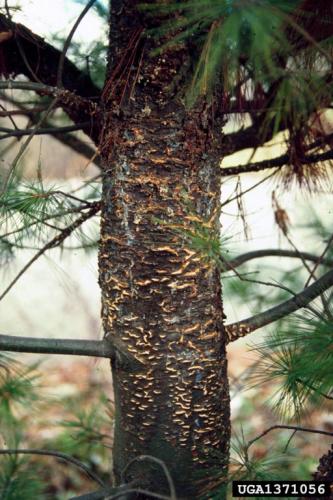White Pine Blister Rust
Identification
White pine blister rust (WPBR) is caused by the fungus Cronartium ribicola and affects white pine trees. Symptoms vary with different stages of spore and canker development. The fungus has five spore forms in its life cycle: two (pycniospores and aeciospores) occur on pine, and the others (urediospores, teliospores, and basidiospores) occur on the alternate hosts, currant and gooseberry (Ribes) bushes. The fungus cannot spread from pine to pine.
signs and symptoms
- "Flagging" or browning of pine needles
- For initial infection, look for patches of brownish bark bordered by a yellow discoloration
- Year-round look for cankers bordered by a yellowish discoloration at the canker margin
- Breaks in the bark cankers and a resulting flow of resin
- Signs of rodents feeding on the cankers
- Orange-yellow blisters
- Orange spores on the underside of Ribes leaves in summer
- Brown hair-like projections on the underside of Ribes leaves in late summer
See image slideshow above for signs and symptoms.
Biology
Origin
White pine blister rust is native to Asia. It was brought to North America around 1900, and since then has spread throughout the range of white pine.
Life Cycle
White pine blister rust’s life cycle requires two phases on two different hosts: white pines and a Ribes species (often currant and gooseberries). The spores of the fungus develop on the Ribes host and then spread to the white pines. The fungus may defoliate theRibes host but seldom causes serious harm. However, it can cause mortality in white pine trees. Visit High Elevation White Pines website or American Phytopathological Society website for an in-depth explanation of this fungus’s complex lifecycle.
ecological threat
In Vermont, white pines are a valuable natural and economic resource. Trees fill an important ecological niche, providing food and habitat for wildlife such as porcupine, squirrels, and beaver. Its wood is highly valued for timber, wood working, and Christmas trees. Ribes species produce edible berries that are consumed by both wildlife and humans.
Vermont Distribution
White pine blister rust has spread throughout Vermont.
Citations
Photo Credit
Andrej Kunca, National Forest Centre - Slovakia, Bugwood.org
Joseph OBrien, USDA ForestService, Bugwood.org
Mike Schomaker, Colorado State Forest Service, Bugwood.org
Steven Katovich, USDA ForestService, Bugwood.org
information credit
The American Phytopathological Society






